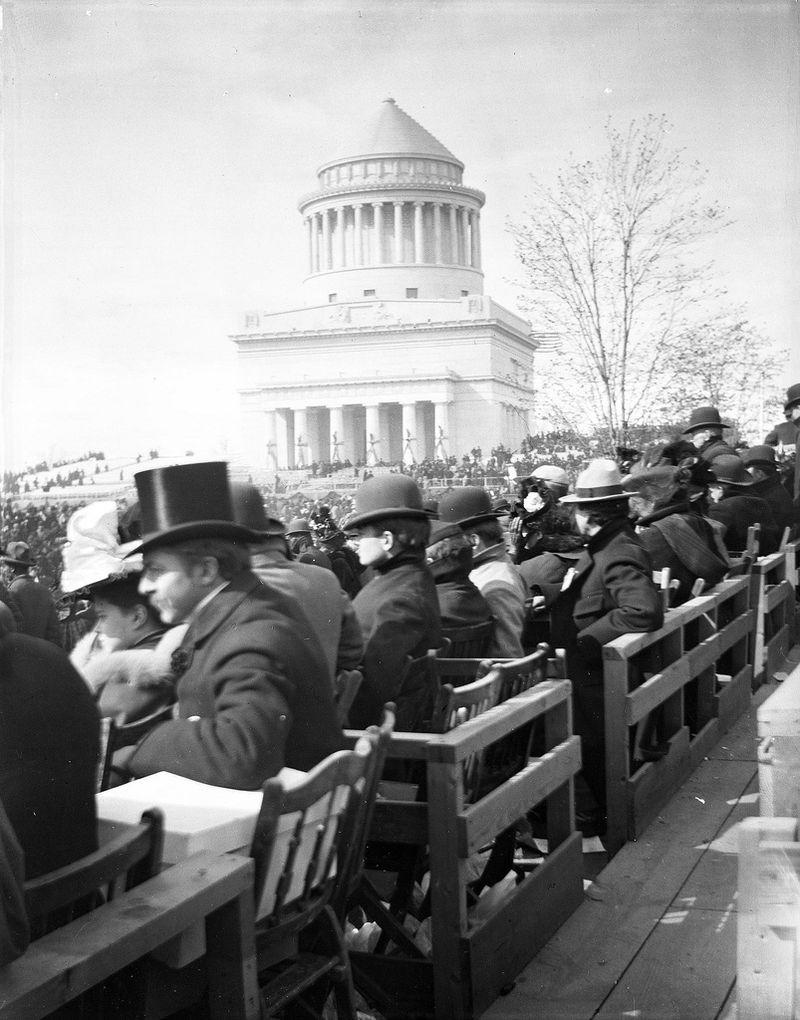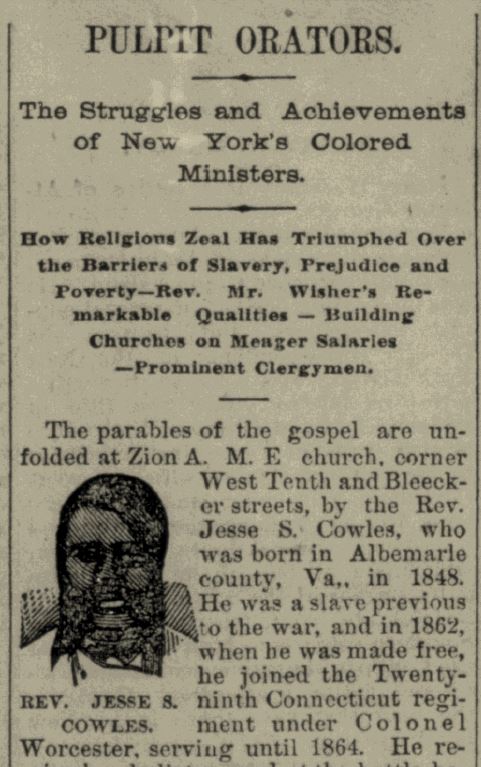In 1915, a prominent African American newspaper, The Chicago Defender, reported on a memorial gathering of the St. John’s AME Sunday school in Cleveland, Ohio. The current school superintendent, the article noted, began by invoking an address given fifteen years earlier by his predecessor, Frank Lee. Born into slavery in Albemarle County, Lee had escaped bondage and entered the Union ranks during the Civil War. In the decades after his service, he established himself as one of the leading members of Cleveland’s Black elite. The war, however, never remained far from his thoughts. Facing a rising tide of White supremacists deploying the memory of the Civil War to advance their cause, Lee and likeminded Black veterans harnessed the late conflict for their own political purposes. In his late address, the article related, Lee had asked the rising generation gathered before him to “learn from deeds of valor of the men of ’61 and ’65.” It was “up to you and me, boys and girls,” he asserted, “to keep the record so clean that no such bloody sacrifice will be needed again. Through our lives and characters, each in his proper place can be a monument to truth”—attesting that slavery had been the root cause of the Civil War, and emancipation its most significant consequence.[1]
As both Lee and readers in 1915 knew, this truth was far from universally accepted. In asking his pupils to serve as living monuments to truth, Lee conjured up images of the stone monuments then rising across the South in honor of an untrue, competing narrative: the Lost Cause. This narrative, created by ex-Confederates yearning both to justify their failed rebellion and restore their preeminence in the postwar nation, erased the complex histories of the antebellum South and the Civil War, replacing them with a whitewashed narrative of genteel southern cavaliers, childlike but faithful slaves, and evil invaders who destroyed a pristine civilization. Proponents of the Lost Cause waxed on incessantly—and falsely—about the loyalty of former slaves, portraying emancipation as an unfortunate occurrence for all involved. Such ideas, as Lee understood, were deadly. The Lost Cause weaponized the past for the sake of the present, invoking the White supremacist racial order of old to fuel the contemporary horrors of Jim Crow segregation, racial disfranchisement, and lynching. The same 1915 issue of the Defender that mentioned Lee laid this matter bare, reporting on Black protests against the film The Birth of a Nation, the paean to the Reconstruction-era Ku Klux Klan that captured the heart of White America—and that inspired the resurrection of the Klan that same year.[2]
Alongside other African Americans and some White Union veterans, Lee refused to let either the Lost Cause or its pernicious effects go uncontested. Indeed, the postwar stories of Black Virginians in Blue like Lee and his fellow Albemarle County native, Jesse S. Cowles, were steeped in the memory of the Civil War. For them, as for their opponents, the past and the present went hand in hand. By harnessing the memory of their wartime struggles against slavery, Lee, Cowles, and their comrades sought to combat contemporary racial injustices. They strove to ensure that their military service had not been in vain—that they had not destroyed the formal institution of slavery only to see it persevere in permutated form. Through reaffirming the innate evil of slavery and the righteousness of emancipation, these Union veterans hoped to inspire future generations to safeguard the fruits of freedom against its many, powerful detractors.[3]
In their forays into Civil War memory, Lee and Cowles drew upon a wealth of personal experience. Lee, born into slavery in Albemarle County, had escaped into Union lines in 1862. He had enlisted in the 5th Massachusetts Volunteer Colored Calvary Regiment, returning to Virginia to play a pivotal role in the fall of Petersburg in the spring of 1865. Following the war, Lee made his way to Cleveland, becoming a leader in the Black community there over the ensuing decades. Beyond working as Sunday school superintendent, Lee served as an officer in such organizations as the Inter-State Voting League, the Young Men’s Foraker Club, and the Cleveland Afro-American Republican Club. He played a leading role in mobilizing local support for the Republican Party. Lee also organized opposition to racial inequities, founding a political advocacy group for Black civil rights following the infamous Wilmington, North Carolina, massacre of 1898, in which White supremacists used mass violence to overthrow the biracial city government.[4]
Throughout his postwar career, Lee connected his contemporary activism to his military legacy. His most prominent such effort was his memorable Sunday school lecture. Like more nationally-recognized figures such as Frederick Douglass, who toured the country invoking Civil War memory until his death in 1895, Lee reminded audiences not to forget the sacrifices made by Black and White Union veterans. Jim Crow, he asserted, was reversing the progress of emancipation. Only through resistance could future generations ensure that Lee’s White and Black comrades had not died in vain.[5]
Lee also played an important role at his local post of the Grand Army of the Republic, the largest Union veterans’ organization. For White veterans, gilding over the ugly past with the patina of sectional reconciliation—of letting bygones be bygones—was a strong temptation. Many GAR posts implemented racial segregation. At the same time, however, the GAR, and especially its integrated branches like Lee’s Austin Post, was one of the few biracial organizations to keep alive the so-called emancipationist memory, commemorating abolition as a lasting, laudable outcome of Union victory. It was an important vessel of resistance to the encroaching Lost Cause. When a rumor spread through the Black community in 1895 that Lee was considering leaving the Austin Post to form a separate, all-Black post due to persistent racial prejudice, the local African American paper, the Cleveland Gazette, lodged a protest. Racial separatism, it noted, “is one thing we all have been fighting against so long.” Rather than remove himself from the post, the Gazette hoped that Lee would “stand [his] ground” for the cause of integration. Lee ultimately did so, remaining in Austin Post.[6]
Lee’s fellow veteran and Albemarle native Jesse Cowles delved into the memory of the Civil War as well. Enslaved in eastern Virginia on the eve of the Civil War, Cowles made his way to Union lines in 1862. The following year, at only fifteen years old, he enlisted in the 29th Connecticut Infantry Regiment (United States Colored Troops). Cowles also returned to Virginia as part of his military career, fighting in several battles. Following a severe wound and an honorable discharge, Cowles moved north. He became an ordained minister in the AME Zion church, moving between Hartford, Pittsburgh, Washington, D.C., New York City, and York, Pennsylvania, where he would die in 1897. Cowles became an accomplished religious and community leader: the York Gazette reported in his obituary that he “became very popular with his people” in his time there. His funeral was “so well attended,” the paper added, including by ministers from throughout the region, that “all who came could not get in the building.” Cowles also strove to reunite with a family torn apart by the ravages of slavery, posting ads in Black newspapers throughout the 1870s seeking out his mother and siblings.[7]

Like Lee, Cowles devoted his time to both the past and the present. In 1885, he led a fundraising drive in the New York Black community for a monument to the late Ulysses S. Grant, the Union general-in-chief and former president. A memorial perpetuating the memory of Union victory, Cowles understood, could serve as a potent weapon in the current war against White supremacy. Cowles coordinated in this endeavor with the Mayor of New York City, William Russell Grace, and his Grant Memorial Association. After years of haggling with other cities over the proper location for the memorial, a monument—Grant’s Tomb—was dedicated in New York in 1897. The minister also mobilized forces against racial injustice. In 1887, when the mayor-developer of Asbury Park, New Jersey, moved to exclude African Americans from the city boardwalk and beach, Cowles organized a coalition of New York Black ministers that “protested in energetic language” against the action. As part of the protest, the AME minister in Asbury Park, J. Francis Robinson, made the connection between the struggle for civil rights and Civil War memory explicit, declaring, “We fought for our liberty some year ago, and we do not propose to be denied it at this late date.” Ultimately, however, their efforts proved futile.[8]
Nevertheless, the remarkable lives of Lee and Cowles illustrate the myriad ways in which Black Virginians in Blue fought against slavery and its afterlives both during and after the Civil War. Their efforts helped preserve an emancipationist memory—a flickering flame that endured the oppressions of Jim Crow, helping kindle the fires of civil rights activism throughout the late nineteenth and twentieth centuries. The brave examples set by Black Union veterans like Lee and Cowles, alongside better-known figures like George Washington Williams, Martin Delany, and John Mercer Langston, would inspire leaders from W.E.B. Du Bois to Martin Luther King, Jr. in their struggles against racial injustice. Their stories are thus well worth remembering today.[9]
Images: (1) Jesse S. Cowles (Cleveland Gazette, July 30, 1887); (2) Masthead of Cleveland Gazette; (3) Grant’s Tomb (courtesy Wikicommons).
[1] The Chicago Defender, June 5, 1915. This post draws heavily on Elizabeth R. Varon, “Black Virginians in Blue,” lecture delivered at Unity Day, Charlottesville, Virginia, May 30, 2019.
[2] For more on the Lost Cause, see Gary W. Gallagher and Alan T. Nolan, eds., The Myth of the Lost Cause and Civil War History (Bloomington: Indiana University Press, 2000).
[3] For more on black and white emancipationist memory, see David W. Blight, Race and Reunion: The Civil War in American Memory (Cambridge, Mass.: Harvard University Press, 2001); Barbara A. Gannon, The Won Cause: Black and White Comradeship in the Grand Army of the Republic (Chapel Hill: University of North Carolina Press, 2011); and Caroline E. Janney, Remembering the Civil War: Reunion and the Limits of Reconciliation (Chapel Hill: University of North Carolina Press, 2013).
[4] The Cleveland Gazette, November 5, 1892, March 25, 1893, October 31, 1903, and Varon, “Black Virginians in Blue.”
[5] A prototypical speech by Douglass on Civil War memory is “Speech delivered in Madison Square, New York, Decoration Day,” May 30, 1878, Frederick Douglass Papers, Manuscript Division, Library of Congress, Washington, D.C. Also see Blight, Race and Reunion.
[6] The Cleveland Gazette, December 5, 1885, February 6, 1886. For more, see Gannon, The Won Cause and Janney, Remembering the Civil War.
[7] “Pioneering Professionals,” Dollar Bank Heritage Center, <https://www.dollar.bank/Company/About/Dollar-Bank-Heritage-Center/Dollar-Bank-s-Early-African-American-Customers/Pioneering-Professionals>; “U.S. Colored Troops from York County,” York County History Center, < https://www.yorkhistorycenter.org/wp-content/uploads/2019/04/US-Colored-Troops-from-York-County-website-no-notes.pdf>; “The Cowles Funeral,” York Gazette, July 21, 1897; and The New National Era, August 10, 1871.
[8] Varon, “Black Virginians in Blue”; Jesse S. Cowles to William Russell Grace, August 17, 1885, General Grant National Memorial Archives, National Park Service, New York, NY; “Educator’s Guide,” General Grant National Memorial, < https://www.nps.gov/gegr/learn/education/upload/General-Grant-National-Memorial-Educator-s-Guide-revised-10-2013.pdf>; and David Goldberg, “Greetings from Jim Crow, New Jersey: Contesting the Meaning and Abandonment of Reconstruction in the Public and Commercial Spaces of Asbury Park, 1880-1890,” Concepts 30 (2007): 1-17.
[9] See, for example, W.E.B. Du Bois, Black Reconstruction in America (New York: Harcourt Brace, 1935) and Martin Luther King, Jr., “I Have a Dream,” Speech at the March on Washington, August 28, 1963.





